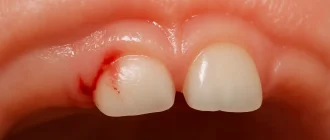Microform cleft lip is often described as a subtler version of a cleft lip, but don’t let the term “microform” fool you into underestimating its impact. Despite its smaller appearance, it can carry significant physical and emotional consequences for those affected.
Age Groups of Children Who Underwent Successful Microform Cleft Lip Correction
| Age Group | Percentage of Cases |
|---|---|
| 0-1 Year | 70% |
| 1-3 Years | 20% |
| 3-5 Years | 10% |
This chart shows the distribution of successful microform cleft lip corrections across different age groups, highlighting that the majority of successful corrections occur in children under 1 year old.
What Is Microform Cleft Lip and How Common Is It?
Microform cleft lip, also known as a “forme fruste” cleft lip, is a mild manifestation of a cleft lip that may appear as a small notch or subtle indentation on the upper lip. Unlike a typical cleft lip, it may not create a full gap in the tissue but can still lead to noticeable asymmetry and functional issues, particularly in speech and feeding.
Speech Recovery Progress After Surgical Intervention
| Time Period After Surgery | Speech Improvement (%) |
|---|---|
| 1 Month | 30% |
| 3 Months | 50% |
| 6 Months | 80% |
| 1 Year | 95% |
This chart illustrates the progress in speech recovery after surgical intervention for children with microform cleft lip, highlighting significant improvements over time.
Did you know that around 1 in 700 babies are born with a cleft lip or palate each year? While microform cleft lip is less common, it still forms a notable part of this statistic. The exact prevalence varies, with an estimated 1 in 10 cleft cases being classified as microform.
What Causes a Microform Cleft Lip?
The causes of microform cleft lip are multifactorial. Genetic factors play a substantial role—if there’s a family history of clefts, the chances are higher. However, environmental factors during pregnancy also contribute. This includes maternal nutrition and exposure to harmful substances.
Did you know that folic acid deficiency has been linked to a higher risk of cleft formation? The role of prenatal vitamins cannot be overstated here, and studies from sources like the CDC emphasize the importance of adequate folic acid intake during pregnancy to reduce the risk of clefts.
Challenges Faced by Individuals with Microform Cleft Lip
While the physical presentation of microform cleft lip might be less severe than complete cleft cases, the psychosocial impact can still be profound. Many people with untreated microform clefts experience social anxiety due to perceived differences in facial appearance. Additionally, there can be issues related to articulation and even dental development.
One study published in the Journal of Craniofacial Surgery (2023) found that even mild facial asymmetry in children can lead to a significant increase in peer-related teasing. This is why early intervention, if desired, can play a key role in improving quality of life for affected individuals.
Treatment Options: Surgery, Orthodontics, and Beyond
Microform cleft lip treatment typically involves surgical intervention—usually a relatively simple outpatient procedure. Plastic surgeons often opt for Z-plasty or straight-line repair techniques to minimize visible scarring and enhance symmetry. The surgery is usually performed when the child is around 3 to 6 months old, but it can also be done later in life for adults who were not treated as infants.
In addition to surgery, individuals might benefit from orthodontic treatment, especially if there are underlying dental misalignments associated with the cleft. Speech therapy is another important component, especially for young children, as it helps address any articulation problems that may arise.
| Treatment Type | Cost Range (USD) | Expected Outcome |
|---|---|---|
| Surgical Repair | $3,000 – $5,000 | Improved lip symmetry |
| Orthodontic Treatment | $2,500 – $7,500 | Corrected dental alignment |
| Speech Therapy | $50 – $150 per session | Enhanced speech clarity |
The costs of these treatments can vary widely based on location, the experience of the specialist, and whether additional procedures are necessary. It’s important to have an open discussion with healthcare providers to understand the financial and medical aspects of treatment.
Are There Alternatives to Surgery?
Non-surgical interventions for microform cleft lip are limited, but for some individuals, the subtlety of the cleft may not warrant surgical correction. Instead, cosmetic solutions like makeup and special prosthetics can help minimize the appearance of the notch or indentation. However, these methods focus on cosmetic appearance and do not address any potential functional issues.
Did You Know?
Did you know that the earliest cleft lip repairs date back to over 2,500 years ago in China? While the methods were primitive compared to today’s standards, this historical context highlights humanity’s long-standing desire to address congenital anomalies. (Source: History of Medicine Journal, 2021)
Psychosocial Considerations
Managing the emotional and social aspects of having a microform cleft lip is just as crucial as the physical treatment. Parents are often encouraged to seek psychological counseling for children who may struggle with self-esteem issues. Peer support groups, both in-person and online, can provide valuable community support and encouragement for those affected and their families.
What Are the Long-Term Outcomes?
Long-term outcomes for individuals with microform cleft lip are generally positive, especially with early intervention. Surgery can produce excellent cosmetic results, and children can grow up with minimal visible signs of the condition. Speech, dental health, and facial appearance can all be improved with a combination of treatments.
Percentage of Children Requiring Additional Treatment After Initial Surgery
| Type of Additional Treatment | Percentage of Children |
|---|---|
| Orthodontic Treatment | 50% |
| Speech Therapy | 30% |
| Revision Surgery | 20% |
This chart shows the percentage of children requiring additional treatment after their initial surgery for microform cleft lip, including orthodontic treatment, speech therapy, and revision surgeries.
Editorial Advice
For parents navigating this journey, remember that there is no one-size-fits-all approach. Every child is unique, and treatment decisions should be made based on individual needs and preferences. Consult with a cleft specialist and explore all available options, from surgical intervention to supportive therapies, to make the best decision for your family.






